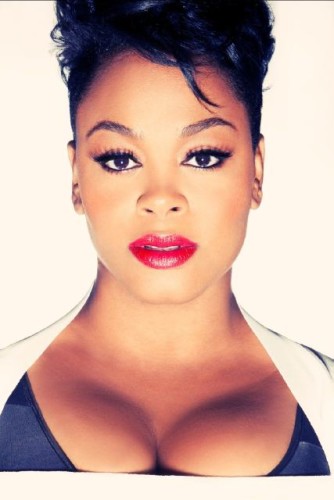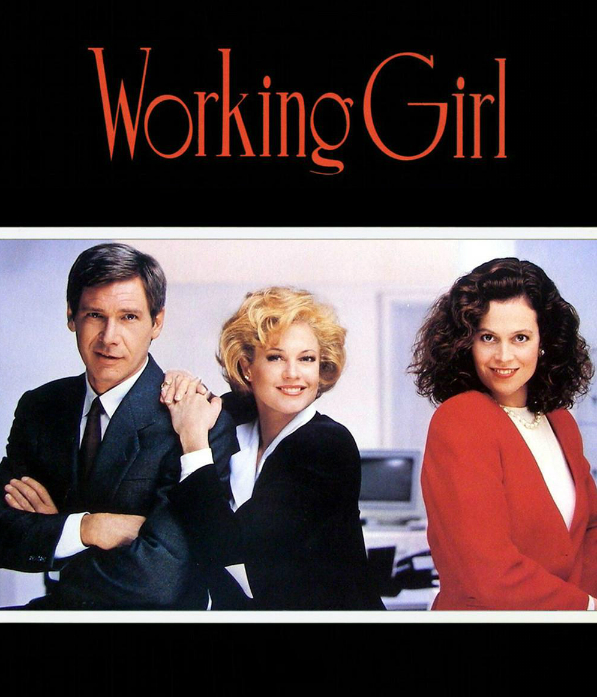This guest post by Chantell Monique appears as part of our theme week on Fatphobia and Fat Positivity.
When thinking about positive images of fat Black women in television, one normally thinks of any television show starring Queen Latifah or Jill Scott. Unfortunately, work by these two women is not enough to combat the plethora of stereotypical and fat-phobic images that plague fat Black women. While it has been difficult to find positive images of fat White women on television, for the past five years there has been more positive visibility than that of Black women. There is a slow and steady body-positive movement taking place in the form of social media and television representation; however, due to White privilege and constant stereotyping, fat Black women have been excluded from this conversation. Including Black women in this movement can potentially lead to more fat-positive representation, e.g. complex characters and romantic love interests, thereby allowing fat Black women to challenge stereotypes and restructure their image to include desirability and worth.

Poet Sonya Renee Taylor wrote a passionate piece for The Militant Baker titled, “Weighting to be Seen” in which she discusses the body-positive movement and the lack of women of color involved. She highlights a few names of bloggers and “body positive heroines” noting that aside from their body sizes, it’s their whiteness that allows their images of “bravery” to go viral. Taylor says, “Our society tells us fatness is not beautiful. Blackness is not beautiful. So even while reclaiming size diversity as beautiful, the presence of Blackness complicates the narrative.” She argues that although there is a body-positive movement occurring, including Black women in this conversation “complicates the narrative”; therefore, it’s easier to leave them out altogether. She’s not asserting this is by anyone’s conscious choice, but it’s a result of White privilege. Taylor says, “Being seen in our bodies, in our fullness and beauty is a birthright women of color have never had…the vehicle to even beginning to dismantle weight stigma is to be seen as fully human in this society [which] is a privilege that requires white skin…” Taylor’s observation of the body-positive movement challenges the notion that all women can and have been included; in addition, it underlines why there has been a lack of fat-positive representation of Black women in television.

Hollywood has a complicated relationship with fatness, especially female fatness; how it chooses to deal with fat bodies indicates a general lack of respect, and worth. We’ve witnessed fat female bodies being used a comedy, marginalized or ignored all together. Yet over the past five years, we’ve seen a modest amount of fat-positivity in terms of female representation. For example, Melissa McCarthy in Mike & Molly (2010-)–Molly is the protagonist worthy of a romantic relationship which fuels the show’s storyline. In addition, Drop Dead Diva (2009-2014) follows the love and career of a feisty model reincarnated as a plus-size attorney. It must be noted, being reincarnated in the form of a plus-size woman can be seen as a punishment; however, once the show deals with this theme, it rarely mentions her fatness in a negative way. Instead, the viewer gets to watch the heroine argue cases and fall in and out of love. After a string of strong film performances, Australian actress Rebel Wilson landed a starring role on her own show, Super Fun Night (2013-2014). Even though it got canceled, she was the lead, not a stereotypical sidekick. Another body-positive representation is HBO’s Girls (2012-); Lena Dunham’s ability to showcase her body on television either casually or sexually highlights the notion that no matter the size, women are complex, sexual and beautiful beings. The last and most interesting body-positive handling of a fat woman is in Showtime’s Homeland (2011-); although not a fully flushed out character, a plus-size woman engages in “fat sex” with the hunky male lead that stunned most viewers while also commenting on idea that yes, fat women have sex! These images, in conjunction with the body-positive social media presence, bring awareness to fatness in a way that encourages consideration and thought. Unfortunately, like Taylor points out, the faces that represent this movement are White, which leaves fat Black women alone to battle engrained stereotypes such as the ever-present Mammy.

In “Mammies, Matriarchs, and Other Controlling Images,” Patricia Hill Collins argues that stereotypes such as The Mammy “simultaneously reflect and distort both the ways in which black women view themselves…and the ways in which they are viewed by others”; therefore, if the image of the Black woman is relegated to an asexual nurturer who lacks desirability, how can she or others see her as worthy of love? This notion has been egregiously reflected in television; for example, Cate Young writes an article for Bitch Flicks that investigates the treatment of Gabourey Sidibe’s Queenie in American Horror Story: Coven. She uses the Strong Black Woman stereotype in order to analyze Sidibe’s character, asserting that “Queenie is presented as being the only one unworthy of love or sex.” While Young doesn’t mention Sidibe’s size, one can only assume it was easier for AHS to portray a fat Black woman as unlovable instead of a thin one. Thin Black actress experience stereotyping also but there is substantial proof that indicates Hollywood is comfortable showcasing them as more lovable than fat Black women.

Unfortunately, there aren’t fat-positive images of fat Black women comparable to those of fat White women e.g. leading characters that show some semblance of depth and complexity. Instead, fat Black women have been pushed to the margins of television, infiltrating stereotypical roles that communicate undesirability. To illustrate, Amber Riley’s character on Glee (2009-) never had a lasting romantic relationship. We were able to see the majority of Glee’s cast fall in love and engage in sustainable relationships but not her. At one point she dates two gentlemen but finally decides not to be with either one. While one can appreciate a woman’s right to be single, not giving the plus-size Black girl a romantic relationship implicitly reinforces her undesirability. Through these images, fat Black girls are able to shape their identity but if television says their undesirable, if affects their self-perception.

There has been constant discourse regarding representation of fat Black women in television and because images help to shape our identities, consuming negative images can impact how fat Black women see themselves. Dwight E. Brooks and Lisa P. Hebert, authors of “Gender, Race, And Media Representation,” argue, “How individuals construct their social identities, how they come to understand what it means to be male, female, black, white…is shaped by commodified text produced by media…”; consequently, there are no innocent images out there and relying on stereotypes in order to define a group of people greatly impacts their self-perception. This can be directly applied to fat Black women who have been characterized as undesirable and unworthy of romantic love. If these women aren’t seeing any positive images of themselves on screen, how are they able to construct an identity of truth? Even though they can rely on their community for positivity, if it’s not reinforced through media representation then it renders that support useless.

There are talented fat Black actresses desperate to play complex characters without submitting to mainstream standards of beauty but there are no substantial roles available to them. During the 1990s Golden Age of Television (Living Single, Moesha, The Parkers, That’s so Raven, etc.) there were countless parts for women of color but as times have changed, so have the opportunities. We’re unable to rely on Queen Latifah and Jill Scott to speak for a whole group of women and because a powerful showrunner like Shonda Rhimes has normalized diversity on television, it seems unfair to ask her to create characters that actually look like her, especially after all she’s done for Black women. This means fat Black women must not only become part of the body-positive movement but perhaps the face of it; in addition, we must look for creative ways to tell our stories, taking an active role in our media portrayal. Only then can we combat White privilege and stereotypes in order to restructure our images to include desirability and worth.
Chantell Monique is a Creative Writing instructor and screenwriter, living in Los Angeles. She holds a MA in English from Indiana University, South Bend. She has previously written for Bitch Flicks and is a contributor for BlackGirlNerds.com. She’s addicted to Harry Potter, Netflix and anything pertaining to social justice and Black female representation in film and television. Twitter @31pottergirl
















